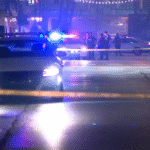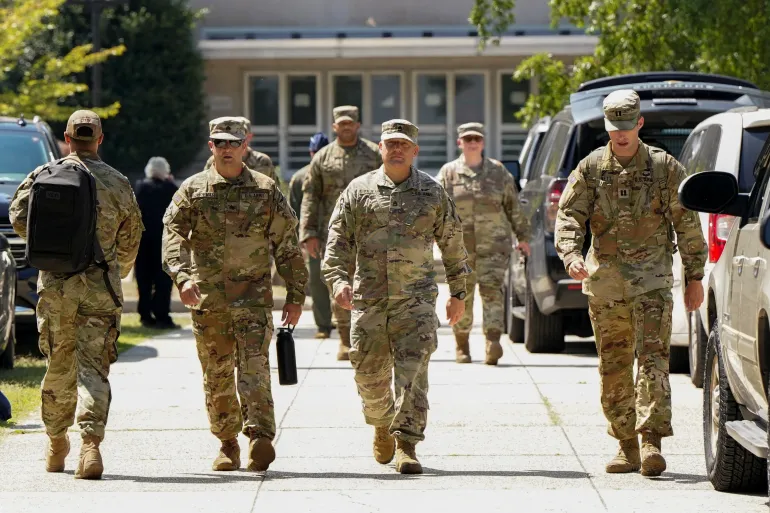Washington, D.C. – President Donald Trump has recently advocated for deploying the National Guard to several major U.S. cities, including Chicago, New York, Seattle, Baltimore, San Francisco, and Portland, Oregon, citing concerns about rising crime. However, extensive data analysis reveals a contrasting narrative: most violent crime rates in these cities and nationwide have actually declined significantly in recent years.
Despite Trump’s public warnings and threats to take federal control of law enforcement—as he did in Washington, D.C.—crime statistics tell a different story. The first half of 2025 saw notable decreases in homicides compared to 2024, continuing a positive post-pandemic trend that experts find encouraging.
A Closer Look at the Crime Data and Trends
According to AH Datalytics, which provides a Real-Time Crime Index using law enforcement data, the following trends have been observed in key cities mentioned by President Trump:
- Aggravated assaults, including nonfatal shootings, have declined in Chicago, Portland, Seattle, Baltimore, and San Francisco, while remaining quite stable in New York.
- Rape reports rose in New York and Chicago during the first half of 2025 but fell in the other cities, including a striking 51% drop in San Francisco.
- Property crimes such as theft, burglary, and motor vehicle theft were mostly lower in these cities during the first six months of 2025.
John Roman, director of the Center on Public Safety & Justice at the University of Chicago, emphasized that while some urban neighborhoods face persistent challenges, there is no true crime crisis in U.S. cities today. He stated,
“We’re at a remarkable moment in crime in the United States.”
Contrasting Public Perceptions and Realities
Public sentiment on crime diverges from the data. An AP-NORC Center for Public Affairs Research survey revealed that 81% of Americans view crime as a “major problem” in large cities. Yet, only 32% support federal control over local police forces.
High-profile violent incidents continue to capture public attention, such as the tragic shooting at a Catholic school Mass in Minneapolis, underscoring that crime remains a real concern, even amid overall declines.
Political Dimensions and City Leaders’ Responses
Trump’s focus on primarily Democratic-run cities in states that opposed him in 2024 highlights the political aspect of his crime rhetoric. Notably, he has not suggested deploying the National Guard to major cities in Republican-leaning states, despite those places sometimes experiencing higher crime rates. For example, Charlotte, North Carolina, saw its homicide rate increase to 105 in 2024, up from 88 in 2023, and vehicle theft rates more than doubled from 2020 to 2024.
Residents like Amy Holt of Charlotte expressed discomfort at the idea of military presence in city neighborhoods, describing it as “alarming” and “scary.”
Meanwhile, Democratic elected officials in Trump-targeted cities strongly reject the notion that their communities require National Guard intervention. San Francisco Mayor Daniel Lurie stated,
“Crime is at its lowest point in decades, visitors are coming back, and San Francisco is on the rise.”
Experts Question the Effectiveness of National Guard Deployment
Experts have voiced skepticism over the benefits of deploying the National Guard for policing purposes in urban environments.
Michael Scott, director of the Center for Problem-Oriented Policing and a former police chief, applauds Baltimore’s approach to crime reduction through mentorship, social services, and job opportunities. He said,
“That approach has resulted in more significant reductions in shootings and homicides than any other strategy I’ve seen in the over 50 years I’ve been in the field.”
Maryland Gov. Wes Moore also criticized National Guard deployments, calling them “not sustainable, scalable, constitutional, or respectful.”
Scott further noted the potential negative effects of military presence, explaining,
“It’s going to make residents think: Things must be much worse than I realize to have the military in my neighborhood. What’s going on? It’s more likely to generate undue fear and apprehension than it will lead to perceptions of reassurance and safety.”
The Bigger Picture and What It Means Going Forward
While headlines emphasize violent crime and the need for federal intervention, the data suggest a different reality. Most U.S. cities, including those highlighted by Trump, have seen significant declines in violent and property crimes, reflecting effective local strategies and community engagement.
As discussions about public safety and crime continue, it is essential to balance concerns with facts and appreciate successful models of violence reduction.
For more detailed insights, consult the original report at The Independent via NewsBreak.
Your Thoughts Matter!
What do you think about the suggestion to deploy the National Guard in major US cities amid declining crime rates? Do you believe local law enforcement and community programs provide sufficient safety? Share your thoughts and experiences in the comments below!













